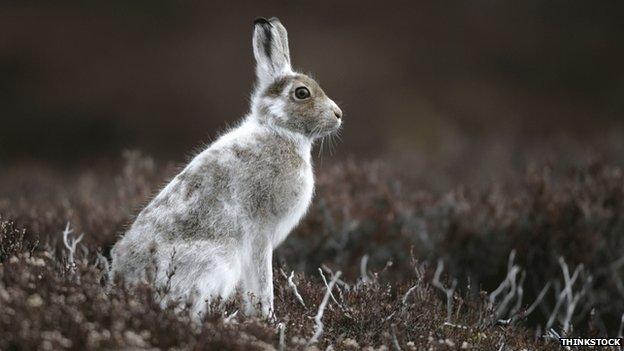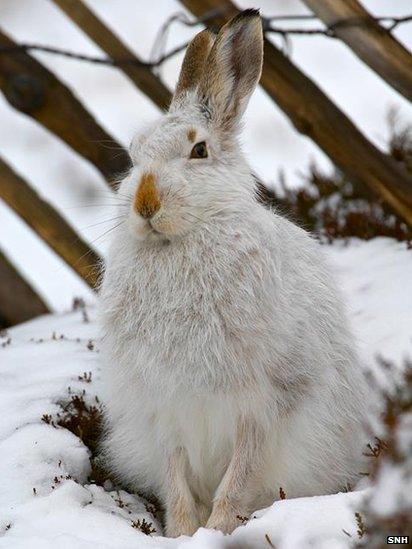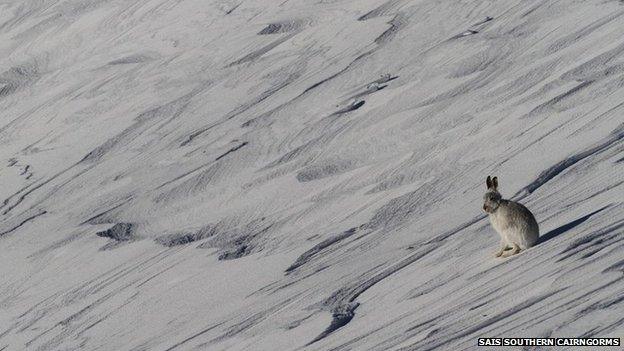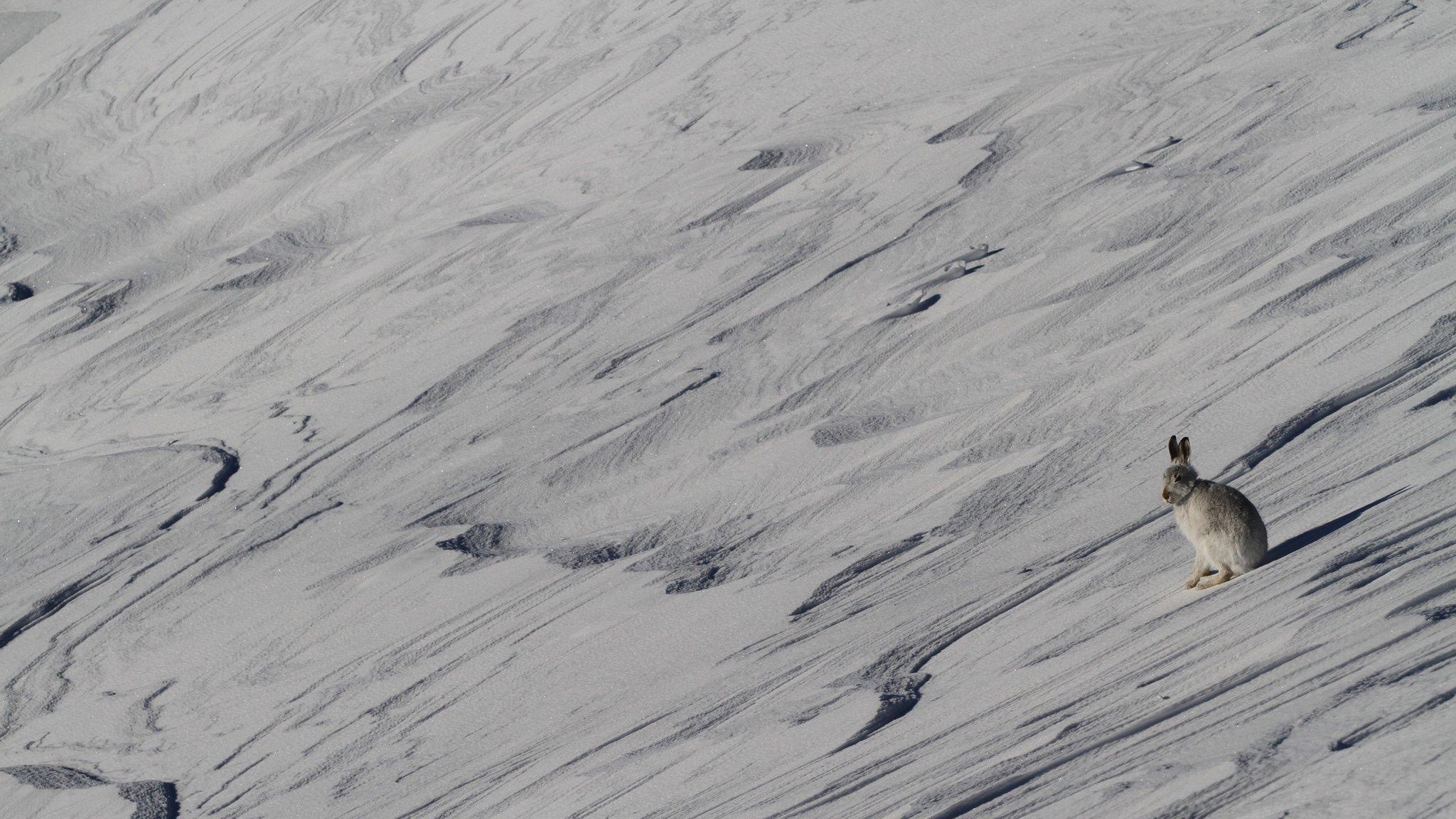Hillwalkers' help sought on large-scale blue hare culls
- Published

Scotland has almost all of the British mountain hare population
Hillwalkers and climbers have been asked to help record large-scale culls of one of the UK's most elusive animals.
Mountain hares change colour from brown to white to better camouflage themselves against winter snow.
Also known as blue hares, Scotland has almost all of the British mountain hare population.
Scottish Natural Heritage (SNH) and other bodies have asked shooting estates to scale back blue hare culls.
Mountain hares can be shot for sport and they are also culled as part of the management of grouse moors.
One of the reasons for the culls is because the hares carry sheep ticks which can infect the game birds with a disease called the louping ill virus.

The hares are Britain's only native hare
In December, SNH, Game and Wildlife Conservation Trust and Scottish Land and Estates asked shooting estates to limit large-scale culls because of concerns about the species' conservation status.
According to SNH, heather moorland managed for grouse shooting provides the best habitat for mountain hares.
They are Britain's only native hare and may have been here since the Ice Age.
The brown hare, which can be seen on farmland across Scotland, were introduced to Britain possibly by the Romans or during the Iron Age.
Hillwalkers and climbers are among those with the best chances of spotting mountain hares, and evidence of large-scale culling.
In January, a hare was photographed by a Sportscotland Avalanche Information Service forecaster in the Southern Cairngorms.
Outdoor enthusiasts have been asked to email SNH_CUSTOMER_RELATIONS@snh.gov.uk with information on large-scale culls.

A blue hare photographed in the Southern Cairngorms by an avalanche forecaster
Conservationists believe numbers of blue hares are declining.
The last national estimate, published in 1995, suggested that there were 350,000 hares in Scotland. However, the estimate had error margins of plus or minus 50%.
Heavy snowfalls in 2010 hampered efforts to monitor numbers in upland areas of Scotland.
A report for SNH at the time said the snow may also have driven hares from their usual territories.
The animals provide food for other species such as golden eagles, foxes and stoats.
- Published20 January 2015

- Published28 April 2011